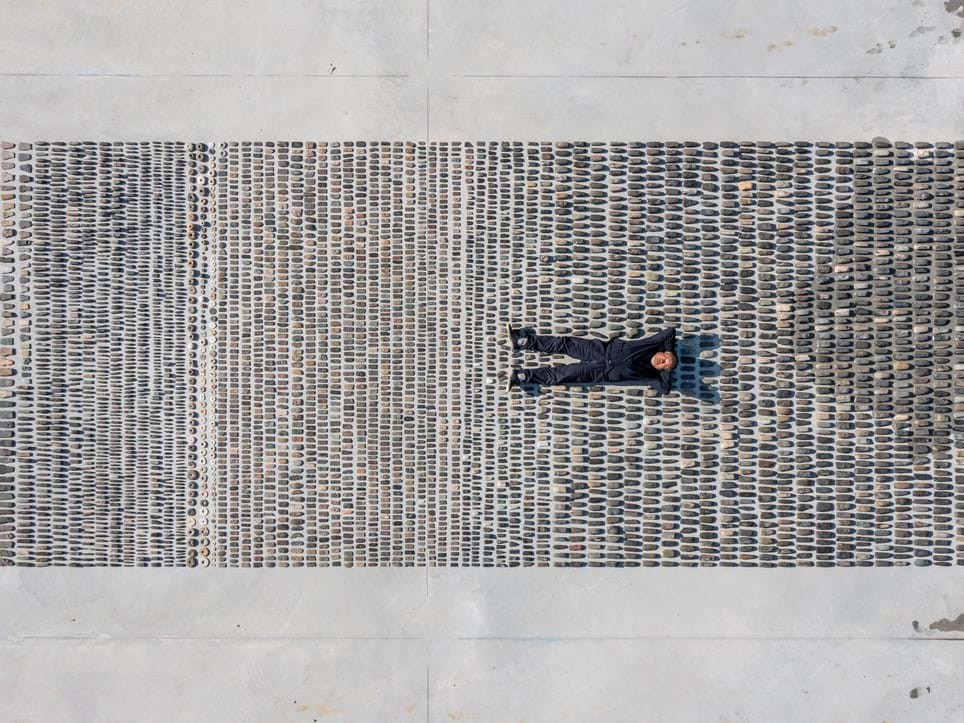On a sprightly spring morning just off Kensington High Street, the sun gleams against the glass facade and angular roof of West London’s Design Museum. The unique 1960s Grade II listed landmark stood vacant for over a decade, before being transformed by British architect John Pawson and his team in 2016. Now the brutalist, grey building pays host to the work of visionary artist Ai Weiwei for a powerful retrospective that only a building with confidence could house to best effect.
One of the world's most celebrated living artists, Ai Weiwei captures the times with his thought-provoking larger-than-life installations and plays on the mundane. But his work is not lost in a concept-driven void and instead champions his activism.
The Chinese-born artist has been a loud opponent of corruption and human rights abuses in his home country (much to his own expense, given the threat of detainment should he return there) and, in recent years, has joined the fight in raising awareness of the global refugee crisis. This exhibition tells his story – and the story of thousands of others – one Lego block at a time.
Before entering the gallery space staff warn the audience to watch their step, as Weiwei’s installations spill out across the gallery’s polished terrazzo flooring. At the heart of the exhibition are five expansive 'fields', where hundreds of thousands of objects are painstakingly laid out on the ground – ready for spectators to trip over.

From Stone Age tools, porcelain cannonballs and teapot spouts (dating back to the Song dynasty) to a sea of technicolour plastic Lego bricks, all personally collected by Ai over the years, his ‘fields’ are an example of the power of order, repetition and excess. Acting as a celebration of traditional craftsmanship and giving these relics newfound contemporary meaning.
The exhibition further explores the tensions between past and present, by drawing parallels between hand and machine, precious and worthless, and construction and destruction. A Han dynasty urn emblazoned with a Coca-Cola logo, is a standout; as are multiple examples of Ai's 'ordinary' objects, where he has transformed something useful into something useless but with value, like a builder’s helmet cast from glass and a takeaway box made from marble.
Arguably, the highlight of the whole show covers an entire wall of the exhibition space, with a 15-metre-long piece made entirely from individually placed Lego blocks. In a myriad of 20 hues, at first glance, it is read as a recreation of the Impressionist masterstrokes of Claude Monet's ‘Water Lilies’, but upon closer inspection (and when guided by the show’s notes), we understand that the tryptic also replicates an image of the underground dugout where Ai’s father lived during enforced exile in the late 1960s.

Making Sense, marks Ai's biggest UK show in 8 years, since the first major survey of his work at the RA back in 2015, which came as a result of the artist becoming widely known in Britain following his triumphant sunflower seeds installation in Tate Modern’s Turbine Hall back in 2010.
Over the years, his works have become increasingly relevant, especially as the refugee crisis has reached breaking point. Today, Ai’s work feels timely and poignant and Making Sense is an unmissable account of the past brought convincingly into the present, presenting new perspectives on Ai’s art and activism, and the themes that have shaped his practice.
Book a ticket to the exhibition at designmuseum.co.uk...
By Augustine Hammond
Making Sense of It











